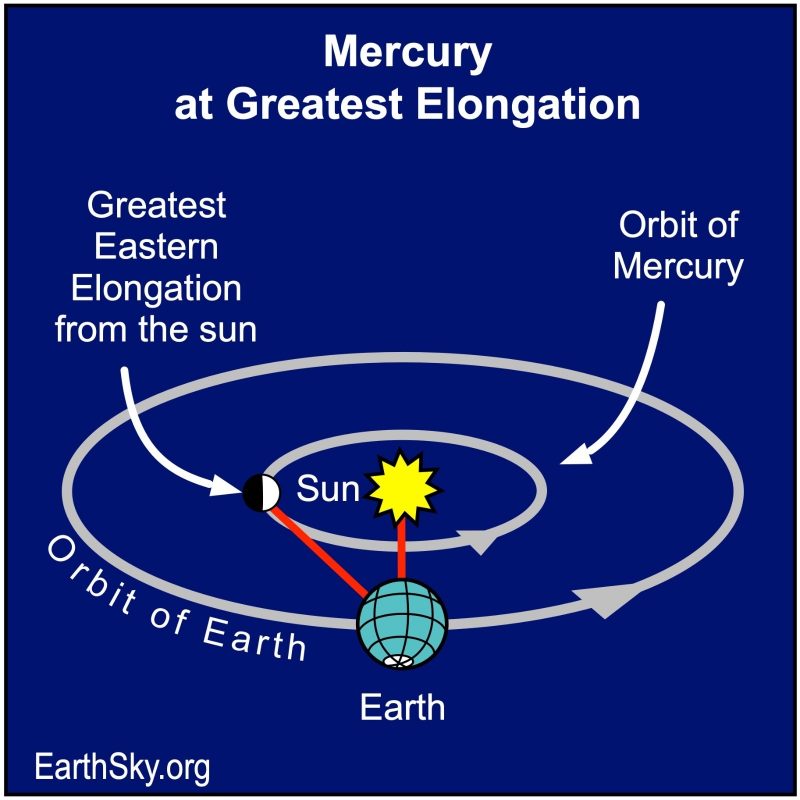Earthsky
1M
9

Image Credit: Earthsky
Mercury farthest from sunset on March 7-8 and near Venus
- Mercury reaches its greatest elongation, farthest from the sun, on March 7-8, 2025.
- Visible in the western sky after sunset, Mercury will be about 18 degrees from the sun at its greatest elongation.
- Mercury, shining at -0.4 magnitude, will appear brighter than most stars during this time.
- It will rapidly fade after greatest elongation as it moves behind Earth in its orbit.
- Mercury will be approximately 47% illuminated and 7.3 arcseconds across when viewed through a telescope.
- During this elongation, Mercury will be in front of the constellation Pisces.
- Mercury's visibility is tied to the sun, never venturing far above the horizon.
- Venus and Mercury will be close in the sky in March, both planets disappearing in bright twilight by mid-March.
- Brilliant Venus will emerge in the morning sky in April, with both planets having upcoming significant events in 2025.
- Mercury's elongations vary throughout the year, with the best evening apparition for the Northern Hemisphere in March.
Read Full Article
Like
For uninterrupted reading, download the app